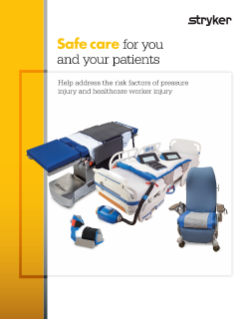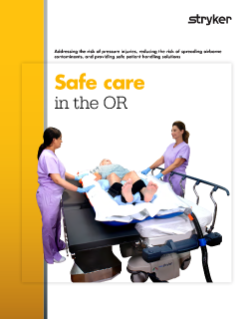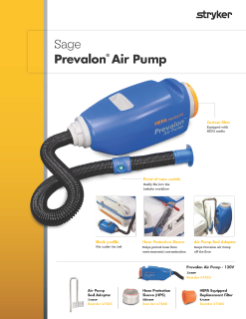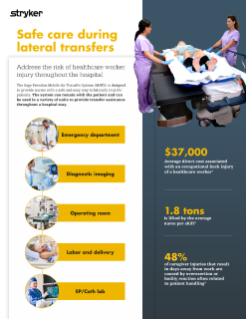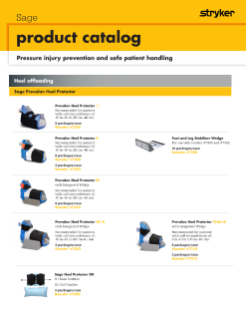Transfer patients with an air transfer system
This system uses a cushion of air to help laterally transfer your patients with significantly less exertion and without the need for lifting. It’s designed to simultaneously inflate and cradle your patients to keep them comfortable and properly positioned. The system can remain with your patients and provide transfer assistance throughout their hospital stay, whether in the ER, OR, Cath Lab or patient care rooms.
- Integrated head support inflates to provide comfort and support for the head and neck
- Quick connect valve provides an easy, secure connection and a quick release
- Hose Protection Sleeve helps protect hose from environmental contamination
- M² Microclimate Body Pad effectively absorbs and locks in moisture to protect patient’s skin while allowing air to flow through
- Imaging capability is acceptable for use in MRI,* X-Ray, CT Scan and ultrasounds1
Help make lateral transfers safer for caregivers
$37,000
Average direct cost associated with an occupational back injury of a healthcare worker2
1.8 tons
is lifted by the average nurse per shift3
48%
of caregiver injuries that result in days away from work are caused by overexertion or bodily reaction often related to patient handling4

Did you know?
$51,800
Estimated cost of workers' compensation claims for shoulder injuries5
$40,400
Estimated workers' compensation cost for low back injuries5
80%
of healthcare workers report working with pain or injury6
- Registered nurses rank in the top 10 occupations at highest risk for work-related musculoskeletal injuries in the U.S.7
We’re committed to actively partnering with your facility to reduce the risk of patient handling injuries and improving outcomes. Our Journey to Zero program can help create a culture of safety that benefits your patients, nurses, and your organization. Let’s start the journey to zero – together.
FAQs
The weight capacity of MATS is up to 1,000 lbs.
MATS is made from non-metal materials and is safe for all magnetic resonance imaging. However, the Prevalon Blower Cart and Blower contain metal materials and are not MRI safe.
Yes. MATS is designed to be breathable, low air loss and imaging compatible and can remain underneath the patient throughout their length of stay.
The Prevalon air pump is equipped with HEPA filtration and aligns with current industry guidelines. The filter is recommended to be changed every five years.
Interested in learning more? Connect with an expert.
*Sage MATS is MR safe by rationale. The device is made from all non-metal materials; therefore MR safety testing was not performed. Compatibility tests did not show artifacts. Based on rationale, the MAT is electronically non-conductive and non-magnetic.
The Prevalon Blower Cart and Blower are not MR safe.
Reference:
1. Data on file, Sage Products LLC. MATS CPG Report-13245-1 v1.0, MRcomp TR0428101, Prevalon MATS Rev 004 Imaging Compatibility Testing Summary, Sage Report P700-16-030R.
2. Ghosh T, Occupational Health and Hazards among Health Care Workers, International Journal of Occupational Safety and Health 2013:3(1);1-4
3. American Nurses Association, Position Statement: Safe Patient Handling Movement. Retrieved from http://nursingworld.org/DocumentVault/GOVA/Federal/ Federal-Issues/SPHM.html. Accessed July 19, 2017
4. Occupational Safety and Health Administration (OSHA), Worker Safety in Your Hospital brochure, 2013.
5. National Safety Council. Workers’ compensation costs. National Safety Council. 2024. Available at: https://injuryfacts.nsc.org/work/costs/workers-compensation-costs/
6. Wiggermann N, Francis R, Solomon A. Individual and organizational factors associated with injury history and patient handling behaviors: results from a nationwide survey of healthcare workers. Appl Ergon. 2024;118:104251.
7. Lee SJ, Faucett J, Gillen M, et al. Factors associated with safe patient handling behaviors among critical care nurses. Am J Ind Med. 2010;53:886–897.
SAGE-PVN-SYK-1346001_REV-1_en_us




